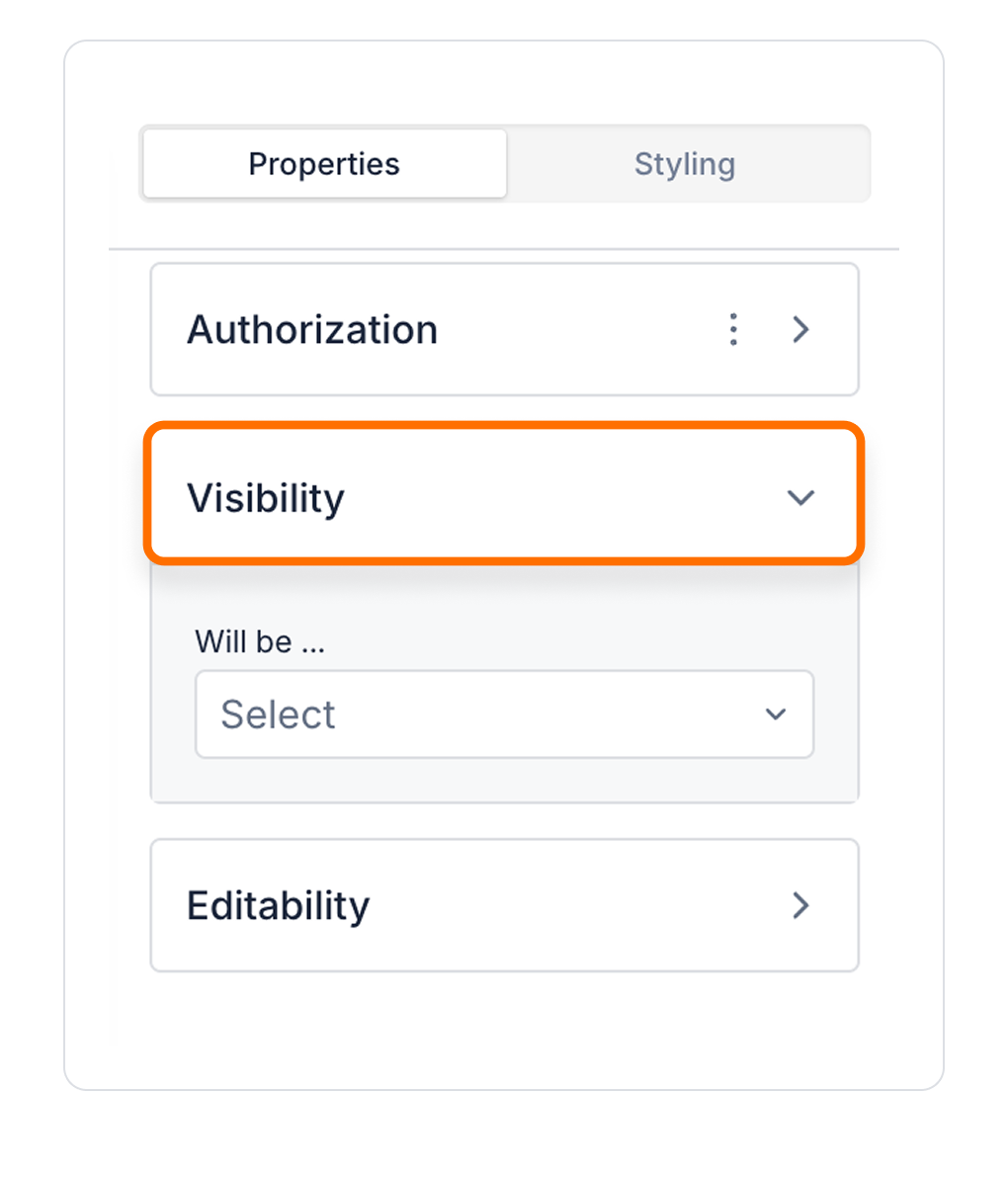


Kuika's Tab element presents different sections of content in applications in an organized and accessible way through tabs. Users can quickly access different content by switching between tabs. The Tab element is especially ideal for managing categorized content, data groups or multiple blocks of information in a single area. In this guide, you will learn how to add and configure the Tab element and customize its visual arrangements.


The following settings can be made in the Properties panel:

Styling and Visual Customization
In the Tab element, the underline of the tab headers can be removed and tab styles can be customized through the Styling panel. The font color, line appearance, and the overall design of the tabs can be adjusted to match the application's interface.
By following this guide, you can use the Tab element effectively in your application.
Authorization

To manage access control at the element level, you can use the Authorization section in the Properties panel.
Access Types
Anonymous
Allows all users to view the element without logging in.
Restricted
Restricts access to only verified users or specific roles.
Unauthorized Behavior (Hide / Disable)
If the user does not have the required role, you can specify how the element should behave in the Choose field:
This setting is used to manage how unauthorized users encounter the element.
Visibility

Always Visible: The element is always visible.
Hidden: The element is hidden.
Sometimes Visible: The element becomes visible based on specific conditions.
When Sometimes Visible is used, AND / OR groups can be added directly, allowing visibility rules to be grouped and more complex scenarios to be managed easily.
To configure the setting:


By customizing your elements with the Styling Panel, you can create impressive interfaces for your web and mobile applications. In this section, you can configure the following settings:
By following these steps, you can configure the Area Chart element to suit your needs.